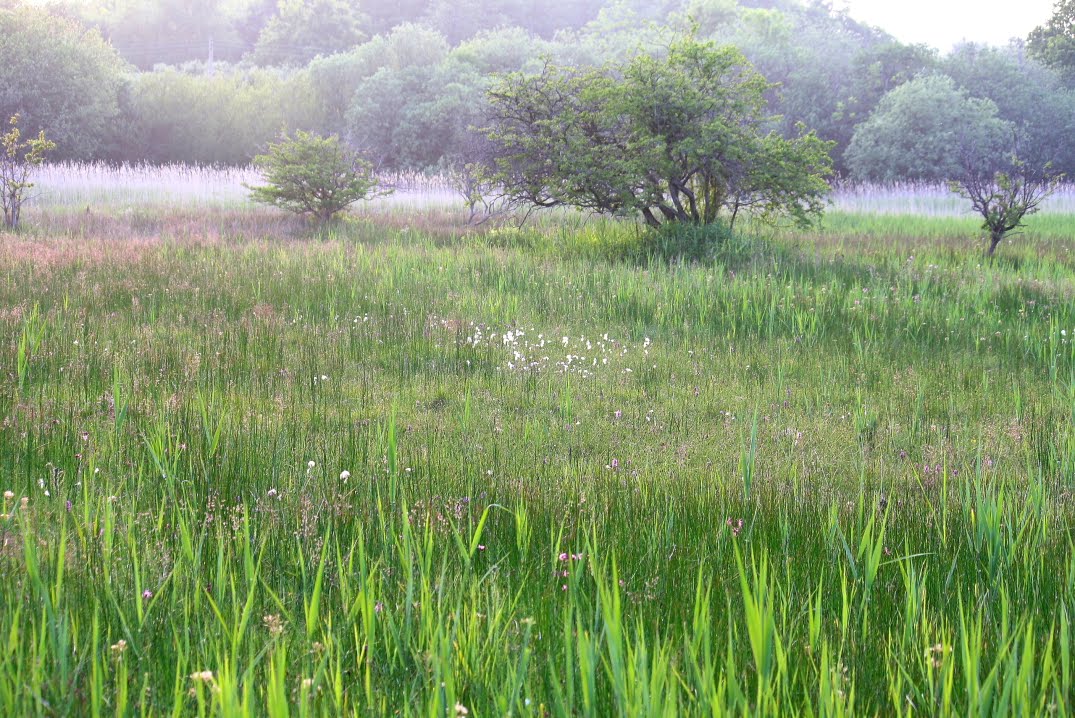Today was another Red Letter one for Southrepps Common, when a film unit from Norfolk Wildlife Trust came to film some of us dogged volunteers at work. Getting right in role from the outset, your correspondent's first question on arrival was "Where's the catering truck?". It turned out there wasn't one, but hey-ho, the show must go on.
Eight of us convened at 10.30, to be joined by the NWT contingent, led by Wildlife Evangelist Nick Acheson, who was quite literally calling the shots. They had already been working with the school, filming on School Meadow. After a short briefing, we all proceeded to the grassy area off Warren Road, where all eight of us were interviewed on camera about our volunteering and what it means to us.
We have previously discussed the need to have a camera handy at all times when out and about in a wildlife paradise like this. On this occasion I did have a camera, insofar as one comes supplied with Clever Phones, and my phone is moderately bright, or at least has the benefit of the Wisdom of Years. I won't say it's full-on smart, in comparison to say a nice shiny new iPhone X, but it is not as scruffy as people who know me would expect. Anyway, I had a camera, right? Perhaps it was the excitement of being in front of the camera for a change, but the pity of it is that I completely forgot to take any pictures to record the momentous event. So the best I can do is to show you where the plucky crew were sent, in order to be filmed doing a spot of Light Weeding, otherwise known as Himalayan Balsam Bashing. Here's the spot, as photographed later in the day:

Himalayan Balsam is a very invasive alien species capable of smothering the ground and crowding out other plants. Every year we try to remove as many HB plants as we can find, and have successfully kept it under some sort of control, but it is necessary to keep revisitng it every year. Unlike me, it likes to keep its feet wet, growing most vigorously beside watercourses. Its seeds 'explode' from the seed heads at the slightest touch when ripe, and any that land in a stream are then carried downstream to colonise and overcome fresh fields. Therefore, the best tactic is to remove them before they set seed, but the problem is the little blighters are much harder to spot than when they are tall and display their admittedly pretty flowers. They also like growing alongside nettles, meaning that the wise Balsam Basher wears nettle-proof clothing, which can be somewhat uncomfortable on a sunny and humid day.
So we were sent out to find the Beastly Balsam and were filmed doing it, until we had a big enough pile for Nick to be satisfied. To my regret, I didn't hear a cry of "Cut", nor to the best of my knowledge did anyone say "That's a wrap", but we got the idea that the job was a good 'un. On the way along the boardwalk back to the car park, as any naturalist would be, Nick was excited to see the splendid show of plant diversity on the central mire area that so interests the botanists. He was particularly pleased to see we had so many Marsh Thistles, but also reeled off the names of numerous plants he spotted within a few yards of the boardwalk. Here is the area in question:
Lovely eh? This is the best time of year to appreciate the Common, so it's no surprise that there will be a guided walk across the place on July 8th, being led by two of our top volunteer botanists. It's going to be an excellent session, highly recommended.
That is one of the events in NWT's Commons Week. Others to be held here will be a highly recommended talk on the History of Norfolk's Commons by Professor Tom Williamson of UEA, at 7.30 p.m. on 10th July in Southrepps Village Hall, and a family event on School Common from 3.30 - 5.00, seeking out the minibeats that live there. More will follow on these three events in our next blog posting.








